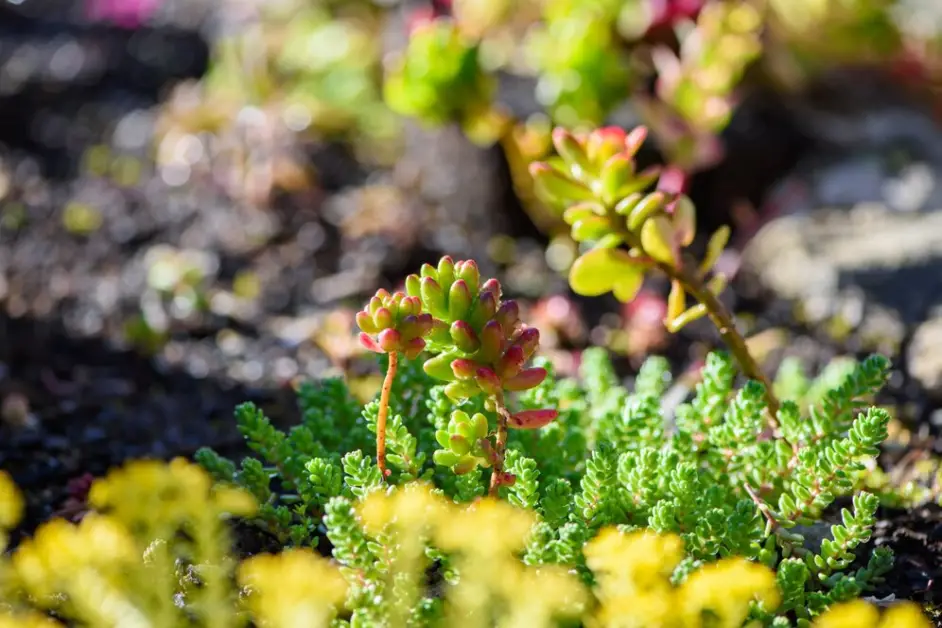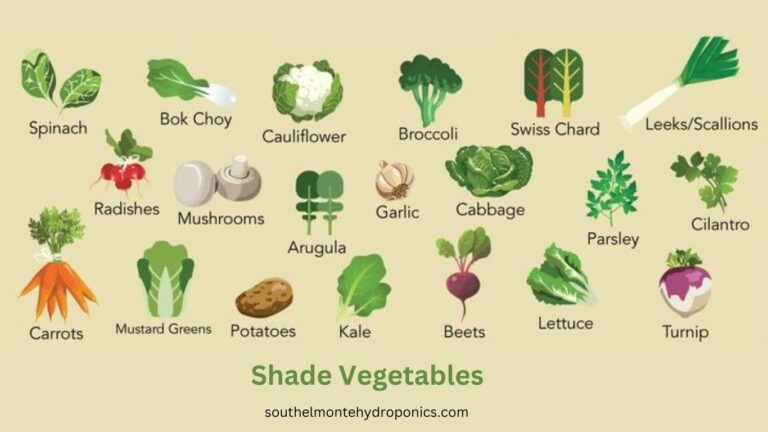The 39 Most Invasive Plant Species in California
Table of Contents
Overview of Invasive Plants in California
In California, invasive plants pose a significant threat to the state’s natural ecosystems. These non-native species have the ability to outcompete native plants for resources, disrupt ecological balance, and alter habitat structures. Some common invasive plants found in California include but are not limited to French broom (Genista monspessulana), yellow starthistle (Centaurea solstitialis), and purple loosestrife (Lythrum salicaria).
The spread of invasive plants in California is facilitated by various factors such as human activities, climate change, and altered land use practices. As these plants establish themselves in new environments, they can rapidly colonize vast areas, forming dense monocultures that limit biodiversity. The ecological and economic consequences of invasive plant infestations highlight the urgent need for effective control and management strategies to mitigate their impact on California’s landscapes.

Impact of Invasive Plant Species on California Ecosystems
Invasive plant species in California pose a significant threat to the delicate balance of the state’s diverse ecosystems. These aggressive plants outcompete native species for resources, leading to a decrease in biodiversity and overall ecosystem health. Their rapid spread can alter landscapes, disrupt food chains, and even contribute to increased wildfire risk. Invasive plants often lack natural predators or diseases that would keep their populations in check, allowing them to quickly dominate and overpower native flora.
The impact of invasive plant species goes beyond ecological concerns and extends to economic and social repercussions. Invasive plants can damage agriculture, forestry, and recreational areas, leading to substantial financial losses. Additionally, they can impact water quality, wildlife habitat, and overall aesthetic appeal of natural landscapes. Addressing the spread of invasive plants is crucial to preserving California’s unique ecosystems and ensuring the well-being of both the environment and its inhabitants.

Common Characteristics of Invasive Plants
Invasive plants often share several common characteristics that contribute to their ability to thrive and dominate in new environments. One significant trait is their high reproductive capacity, with invasive species frequently producing a large number of seeds or other propagules that aid in their rapid spread. Additionally, many invasive plants exhibit aggressive growth patterns, outcompeting native species for essential resources such as water, sunlight, and nutrients. This competitive advantage can lead to the formation of dense monocultures, further displacing native vegetation and disrupting the balance of local ecosystems.
Another common feature of invasive plants is their ability to adapt to a wide range of environmental conditions, allowing them to colonize diverse habitats with varying levels of moisture, temperature, and soil types. This adaptability enables invasive species to establish populations in both disturbed areas, such as roadsides and agricultural fields, and natural ecosystems, posing a threat to biodiversity and ecosystem resilience. Moreover, some invasive plants possess allelopathic properties, releasing chemicals that inhibit the growth of other plant species and provide them with a competitive edge in their new surroundings.
Spread of Invasive Plants in California
Invasive plants have rapidly spread across California, outcompeting native species and disrupting the delicate balance of ecosystems. With the diverse range of climates and habitats in the state, invasive plants have found ample opportunities to establish themselves and thrive. The spread of these invasive species is often aided by human activities such as landscaping, agriculture, and recreational activities, leading to their rapid colonization of new areas.
The lack of natural predators and the ability of some invasive plants to produce copious amounts of seeds or reproduce vegetatively contribute to their aggressive spread in California. Additionally, the absence of strong regulatory measures to prevent the introduction and spread of invasive species further exacerbates the problem. As a result, many regions in California are facing the challenge of managing and controlling the relentless expansion of invasive plants, which not only impact local biodiversity but also pose economic and environmental threats.
Control and Management Strategies for Invasive Plants
Invasive plants pose a significant threat to California’s ecosystems, and effective control and management strategies are crucial in mitigating their spread. One common method for managing invasive plants is through mechanical control, which involves physically removing the plants through hand-pulling, mowing, or cutting. This method is often labor-intensive but can be effective in reducing the spread of invasive species.
Chemical control is another commonly used strategy for managing invasive plants in California. Herbicides are applied selectively to target invasive species while minimizing harm to native plants. However, it is essential to use herbicides responsibly, following all regulations and guidelines to prevent unintended environmental damage. Integrating a combination of control methods tailored to the specific characteristics of each invasive species is key to effectively managing and controlling their populations.
| Strategy | Description |
|---|---|
| Mechanical Control | Physical methods such as hand-pulling, mowing, cutting, or digging up invasive plants to remove them from the environment. Mechanical control is effective for small infestations or in areas where herbicides cannot be used safely. |
| Biological Control | Introducing natural enemies such as insects, pathogens, or grazing animals that specifically target and feed on invasive plant species. Biological control aims to reduce invasive plant populations by exploiting their vulnerabilities or disrupting their life cycle. |
| Chemical Control | Using herbicides or other chemical treatments to kill or suppress invasive plants. Chemical control methods should be applied judiciously and according to label instructions to minimize environmental impact and non-target effects on native flora and fauna. |
| Cultural Control | Implementing land management practices such as prescribed burning, grazing, or altering soil conditions to create unfavorable conditions for invasive plant growth while promoting the establishment and growth of desirable native vegetation. Cultural control methods aim to restore ecosystem balance and resilience. |
| Preventive Measures | Implementing measures to prevent the introduction and spread of invasive plants, such as early detection and rapid response protocols, quarantine measures, public education campaigns, and regulations on the trade and transport of potentially invasive species. |
| Integrated Pest Management (IPM) | Combining multiple control strategies, including mechanical, biological, chemical, and cultural methods, in a coordinated and systematic approach to effectively manage invasive plant populations while minimizing environmental impact and promoting long-term sustainability. |
By employing a combination of these control and management strategies, land managers, conservationists, and policymakers can effectively combat the spread of invasive plants and mitigate their negative impacts on native ecosystems and biodiversity.
Economic Costs of Invasive Plants in California
Invasive plant species in California pose a significant economic burden, costing the state millions of dollars each year in damages and control efforts. These costs are incurred through various channels, including agricultural losses, decreased property values, and expenses associated with managing and eradicating invasive plants. One striking example is the annual loss of over $82 million in agricultural production due to invasive plants impacting crop yields and requiring extensive weed control measures.
Moreover, invasive plants can also cause additional financial strain through the funding of research, monitoring, and restoration projects aimed at mitigating their negative effects on the economy and environment. The costs associated with the spread and control of invasive plants underscore the importance of proactive measures to prevent their introduction and establishment, ultimately safeguarding California’s diverse ecosystems and economic interests.
Environmental Consequences of Invasive Plants
Invasive plants in California have far-reaching environmental consequences, disrupting the delicate balance of ecosystems and threatening native species. These non-native plants can outcompete indigenous flora for resources such as sunlight, water, and nutrients, leading to a decline in biodiversity. As they establish dominance, invasive plants can alter soil composition, increase wildfire risk, and even inhibit the growth of native vegetation crucial for the survival of local wildlife.
Moreover, the spread of invasive plants can negatively impact pollinators, including bees and butterflies, which play a crucial role in the reproduction of many plant species. By disrupting these intricate ecological relationships, invasive plants can further destabilize the natural habitats that support diverse ecosystems. The environmental consequences of invasive plants in California underscore the need for proactive measures to mitigate their impact and preserve the state’s rich biodiversity.
Human Health Risks Associated with Invasive Plants
Invasive plants in California not only pose a threat to the natural ecosystem but also present human health risks. While many may not immediately associate plants with potential health hazards, certain invasive species can cause harm to individuals who come in contact with them. One such example is poison oak (Toxicodendron diversilobum), a common invasive plant in California known for causing skin irritation and allergic reactions upon contact.
Moreover, giant hogweed (Heracleum mantegazzianum), another problematic invasive plant, contains sap that can cause severe burns and blisters when exposed to sunlight, leading to a condition known as phytophotodermatitis. These human health risks highlight the importance of being aware of invasive plant species in California and taking necessary precautions to protect oneself from potential harm while interacting with these plants in the environment.

Case Studies of Invasive Plant Infestations in California
The invasion of non-native plant species in California has had profound impacts on the state’s diverse ecosystems. One notable case study is the infestation of yellow starthistle (Centaurea solstitialis), a highly invasive weed that has spread rapidly across California’s grasslands, displacing native plant species and reducing biodiversity. Despite efforts to control its spread, yellow starthistle continues to pose a significant threat to the ecological balance of these ecosystems.
Another troubling case study involves the invasion of French broom (Genista monspessulana) in California’s coastal regions. This aggressive shrub outcompetes native vegetation, alters soil nutrient levels, and increases the risk of wildfire. The spread of French broom not only threatens the survival of indigenous plant species but also has negative consequences for wildlife that depend on these habitats for survival. Efforts to eradicate French broom have been challenging due to its rapid growth and prolific seed production, highlighting the importance of proactive management strategies to prevent further spread and ecological disruption.
Native Plants at Risk Due to Invasive Species
Invasive plant species pose a significant threat to native plants in California, outcompeting them for resources and disrupting the delicate balance of the ecosystem. These invasive plants often have aggressive growth patterns and lack natural predators or controls in their new environments, allowing them to spread rapidly and overwhelm the native flora. As a result, many native plant species are at risk of displacement or extinction, leading to a loss of biodiversity and ecological stability in California’s diverse habitats.
The impact of invasive species on native plants extends beyond competition for resources. Invasive plants can also alter soil composition, disrupt pollination patterns, and even introduce new diseases that native plants may not be equipped to withstand. This can have cascading effects on the entire ecosystem, affecting not only plant communities but also the animals and insects that rely on them for food and habitat. Protecting native plants from the threats posed by invasive species is crucial for preserving California’s natural diversity and ensuring the health of its ecosystems for future generations.
Legislative Efforts to Combat Invasive Plants in California
Legislative efforts to combat invasive plants in California have been instrumental in addressing the threats posed by these non-native species to the state’s ecosystems. Through the implementation of laws and regulations, policymakers aim to prevent the introduction and spread of invasive plants, safeguarding native biodiversity.
One key aspect of legislative action is the enforcement of plant quarantine measures, which restrict the importation of potentially invasive species and promote the use of certified seed sources. Additionally, funding allocated towards invasive plant management programs facilitates research, monitoring, and on-the-ground control efforts to mitigate the impacts of invasive plants on California’s environment and economy.

Successful Eradication Efforts of Invasive Plants
In the fight against invasive plants in California, successful eradication efforts have proven to be crucial in restoring native ecosystems and protecting biodiversity. One notable example is the eradication of yellow starthistle (Centaurea solstitialis) in the Sierra Nevada region. Through coordinated efforts by government agencies, conservation groups, and dedicated volunteers, the spread of this highly invasive plant has been significantly reduced, allowing native vegetation to thrive once again. This success serves as a testament to the effectiveness of collaborative eradication strategies in combatting invasive species and preserving the natural balance of California’s landscapes.
Similarly, the eradication of hydrilla (Hydrilla verticillata) in the Sacramento-San Joaquin Delta showcases the positive impact of targeted management approaches. By utilizing a combination of herbicide treatments, mechanical removal, and biological control methods, researchers were able to successfully eradicate this aggressive aquatic plant, preventing further expansion into sensitive wetland areas. These efforts highlight the importance of adaptive and integrated eradication techniques in addressing the challenges posed by invasive plants and safeguarding the health of California’s ecosystems.
Collaboration Between Government Agencies and Conservation Groups
Government agencies and conservation groups play a crucial role in addressing the challenges posed by invasive plant species in California. By collaborating on various initiatives, such as monitoring programs, habitat restoration projects, and public education campaigns, these entities can work together to mitigate the spread and impact of invasive plants on the state’s ecosystems. Through shared resources, expertise, and funding, government agencies and conservation groups can implement more effective strategies for managing invasive plant populations and protecting native biodiversity. This collaboration facilitates a comprehensive approach to invasive species management, leveraging the strengths and resources of both sectors to achieve common conservation goals.
Importance of Public Awareness in Combating Invasive Plants
Public awareness plays a vital role in the battle against invasive plants in California. By educating the community about the threats posed by these species, individuals can take proactive steps to prevent their introduction and spread. Through workshops, community events, and outreach programs, people can learn to identify invasive plants, understand their impacts on native ecosystems, and collaborate on effective management strategies.
When the public is aware of the dangers associated with invasive plants, they are more likely to report sightings, participate in eradication efforts, and support legislative measures to control their spread. By fostering a sense of responsibility and stewardship towards the environment, public awareness campaigns contribute significantly to the conservation of California’s unique and diverse landscapes.
Future Challenges in the Fight Against Invasive Plant Species
As we look towards the future in the battle against invasive plant species in California, several challenges loom large on the horizon. One significant hurdle is the increasing globalization and interconnectedness of ecosystems, which facilitates the spread of invasive plants across borders and continents. This presents a complex problem that demands coordinated international efforts to effectively combat the proliferation of these non-native species.
Additionally, climate change poses a formidable challenge in the fight against invasive plants, as shifting weather patterns and temperature changes can alter the habitats and distribution of these species. This unpredictability makes it difficult to anticipate where and how invasive plants may establish themselves, requiring a proactive and adaptive approach to management and control strategies.
Resources for Reporting and Identifying Invasive Plants in California
When it comes to identifying and reporting invasive plants in California, having access to reliable resources is essential for effective management and control. One valuable resource is the California Invasive Plant Council (Cal-IPC), which provides a comprehensive list of invasive plant species in the state along with detailed information on their identification and impact. Additionally, the Calflora database offers a wealth of information on plant species distribution, making it a useful tool for tracking the spread of invasive plants across different regions.
In order to empower individuals to take action against invasive Plants, organizations like the California Native Plant Society offer workshops and training programs on plant identification and reporting. These resources not only enhance public awareness but also facilitate early detection and swift response to new invasive plant incursions. By leveraging these resources and working collaboratively with government agencies and conservation groups, Californians can play a crucial role in protecting their native ecosystems from the detrimental effects of invasive plant species.
How can I report sightings of invasive plants in California?
You can report sightings of invasive plants in California to the California Invasive Plant Council (Cal-IPC) through their online reporting tool or by contacting your local invasive species management agency.
Are there any apps available for identifying invasive plants in California?
Yes, there are several apps such as Calflora and iNaturalist that can help you identify invasive plants in California and report your findings to the appropriate authorities.
What resources are available for homeowners to learn about and combat invasive plants in California?
Homeowners can access resources such as the California Invasive Plant Council’s website, local extension offices, and workshops or trainings on invasive plant identification and management.
Can I volunteer to help combat invasive plants in California?
Yes, many organizations and agencies offer volunteer opportunities to help combat invasive plants in California, such as participating in community weed pulls or restoration projects.
How can I get involved in legislative efforts to combat invasive plants in California?
You can contact your local representatives to voice your support for legislation aimed at combating invasive plants, or join advocacy groups working on invasive species issues in California.

Beck Wakeford is a dedicated writer at SouthElMonteHydroponics, with a fervent enthusiasm for agriculture and technological innovation. Armed with a degree in Agricultural Engineering from a leading university, Beck specializes in hydroponic systems design, automation, and optimization. Their passion for merging traditional farming with cutting-edge technology drives them to explore novel solutions for sustainable food production. Beck’s expertise and keen interest in the intersection of engineering and agriculture make them a valuable asset in the quest for efficient and eco-friendly farming practices. Through their writing, Beck aims to inspire others to embrace the potential of hydroponics in shaping a more sustainable future.







